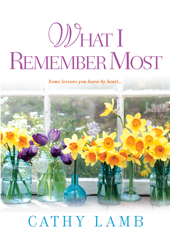Q.
What is your connection to the Midwest?
A.
I was born and raised in Milwaukee.
Moved away in my twenties to live in Chicago, Colorado, New York, and Los Angeles, but came
back in my forties to raise my kids. The Midwest
is home. Like Dorothy says, there’s no place like it.
Q.
You previously worked as an actor, appearing in on-air commercials, made-for-TV
movies, and even an episode of Laverne and Shirley! How have your experiences
with dialogue, facial expressions, and movement on the screen influenced your
writing
and
the way that your characters interact with each other?
A.
Writing…acting…they both come from the same place. The ability to understand
characters down to the tiniest detail. How they dress, what they smell like,
what cereal they eat in the morning, how they respond to certain situations, what
they’re hiding and what they’re sharing, what their ultimate goals are. A
writer creates characters, an actor portrays them, dialogue between them,
whether spoken or written, moves the story along.
Q.
Your latest novel, Mare’s Nest,
exposes a mother’s spot in limbo between her repression of her own distressing
childhood and her support for her daughter’s passion for horses. Similarly, in
your first published work, Whistling in the Dark,
a 10-year old girl becomes encircled with mystery, family secrets, and murder
in her small town, which leads to a loss of childlike innocence. What do you
think the role of writing is in dealing with or confronting pain and
vulnerability?
A.
I think everyone should write, it’s good
for the soul. Be it journaling or a
diary, to take entrenched pain and expose it to the light of day can help us see
it in a different way, and hopefully, transcend it. But publishing what you
write is a whole ‘nother ball of wax. It’s not dissimilar to a person who is
passionate about cooking deciding to open up a restaurant. Two completely
different animals.
Q.
Many of your books are written from the viewpoints of children or young
narrators. What advantages does this allow for in your writing? Are there any
limitations to this specific voice?
A.
Kids emotions are so accessible, their thought processes—disarming, but they’re
often unreliable, and as readers we know this and fear for them. When I write
in a child’s voice, it affords me the opportunity to expose the young
characters to certain obstacles that they interpret in a way that may or may
not be erroneous. Kids are also natural comedians, not in a jokey kind of way,
but in conveying their misconceptions. I love the way they see the world. The
only limitations I’ve found in telling a story through their eyes is that I
need to be extraordinarily vigilant that their language doesn’t surpass their
development and that their observations are appropriate for their age.
Q. Whistling in the Dark is
set in Milwaukee,
your beloved hometown. What was your research process prior to or while
writing? Did you make any discoveries about the town that you hadn’t noticed
before?
A.
Since the story is set during the Fifties in the blue-collar Milwaukee neighborhood I grew up in, very
little research was required. Combing what remains of my memory was the real
key and, if necessary, verifying facts that my child brain might’ve
misinterpreted along the way.
Q.
How do you go about making a story feel authentic? Many writers advice to
hopeful authors “Write what you know.” Do you believe in this mantra? If so,
how do you make it work for you?
A.
All writers approach a story differently. I mine my memory and use my life
experience, but others like to write about 16th century England or
dystopian tales. I think the most important advice I could give to any newbie
is to write what your heart wants you to. What you can’t ignore. What you’re
passionate about. If your adore cats, write about cats, if you’re mesmerized by
mysteries— go for it. What truly moves and intrigues you will affect a reader
the same way.
Q.
You recently did a reading at the Cedarburg Library in Cedarburg, Wisconsin.
Do you find that there is still a kind of literary community, or pockets of
literary communities, despite recent and rapid changes in how books are
published, distributed, and read?
A. People will always love and
seek out stories. Some will gather together to discuss them. Book clubs are a
great example. I’ve spent hundreds of hours with women who’ve read my books and
want to share their experiences. Libraries are another great place to hang out
with bookies, and indie bookstores nurture reader and writer get-togethers too.
Q. What’s next for you?
A.
The
Undertaking of Tess, a novella featuring the ten and eleven-year-old Finley
sisters, was recently released, and in December 2014,
The Resurrection of Tess Blessing, in which we discover what has
become of the sisters thirty years later, will make its debut. Very excited,
and hopeful that readers will fall in love with the girls.
 Milwaukeean Lesley Kagen, author of The Resurrection of Tess Blessing
Milwaukeean Lesley Kagen, author of The Resurrection of Tess Blessing

.jpg)












.jpg)


.jpg)

























